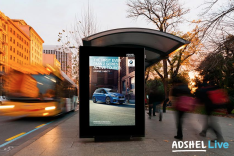Adshel says marketers aren’t using digital outdoor to ‘capacity’ claiming new study shows contextual ads are ‘19% more effective’
 Out of home advertising company Adshel has said clients are still not using the abilities of digital outdoor ads to their full potential, pointing to the results of a study the company has recently completed.
Out of home advertising company Adshel has said clients are still not using the abilities of digital outdoor ads to their full potential, pointing to the results of a study the company has recently completed.
Adshel will roll out a new national outdoor digital network Adshel Live, on October 5 with 270 digital screens across Australia’s major metropolitan cities.
It has now released research, carried out in conjunction with neuroscience firm Neuro-Insight, claiming adverts placed with contextual relevance are 19 per cent more effective than those which are not.


19% more effective, 119% more expensive
yep spot on Mitch.
I think they said 19 times more effective, not 19%? anyways, will someone in outdoor explain what they mean when they say ‘Contextual ads’ ? You know . . . provide some examples (and actual context) for this usage?
apologies: article quotes both “19 times” and “19%” more effective. Which is it guys? helluva lot of difference. . .
Hi Mike – It’s 19%: our bad. Now amended – thanks for letting us know.
Cheers,
Tim – Mumbrella